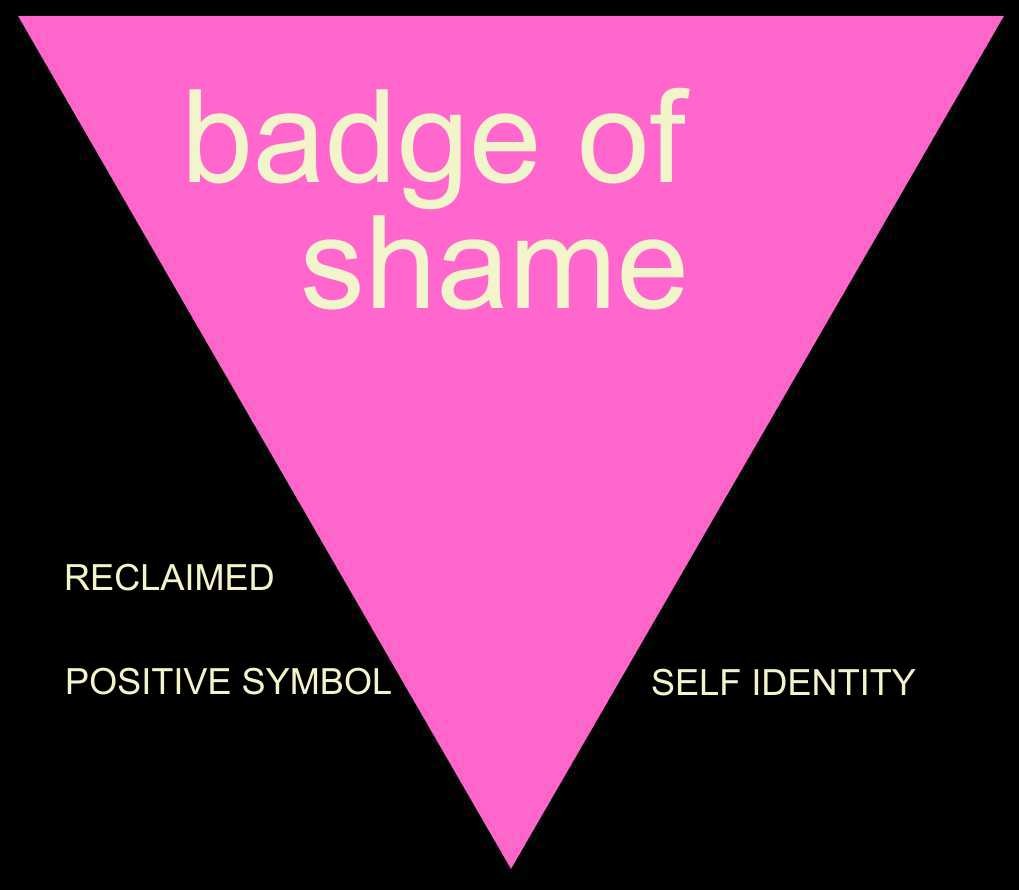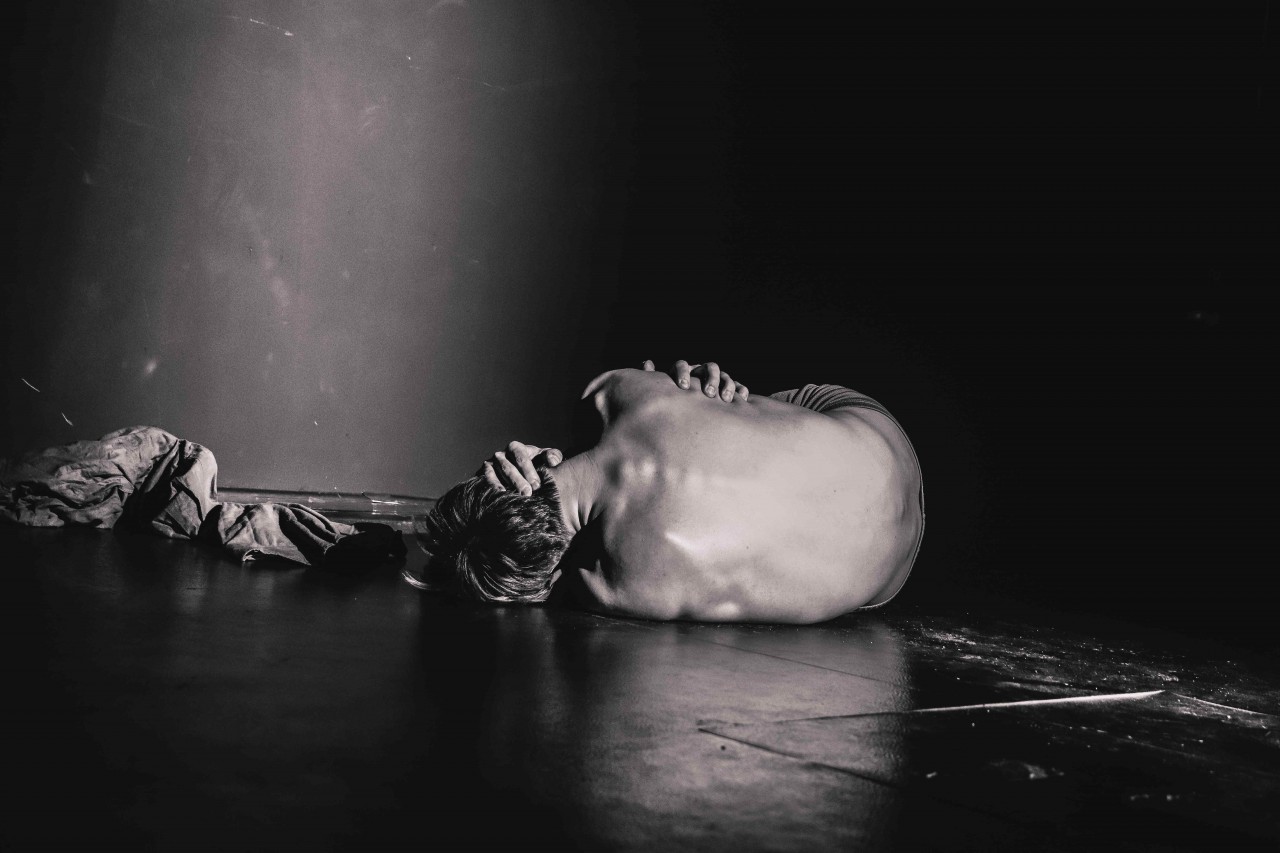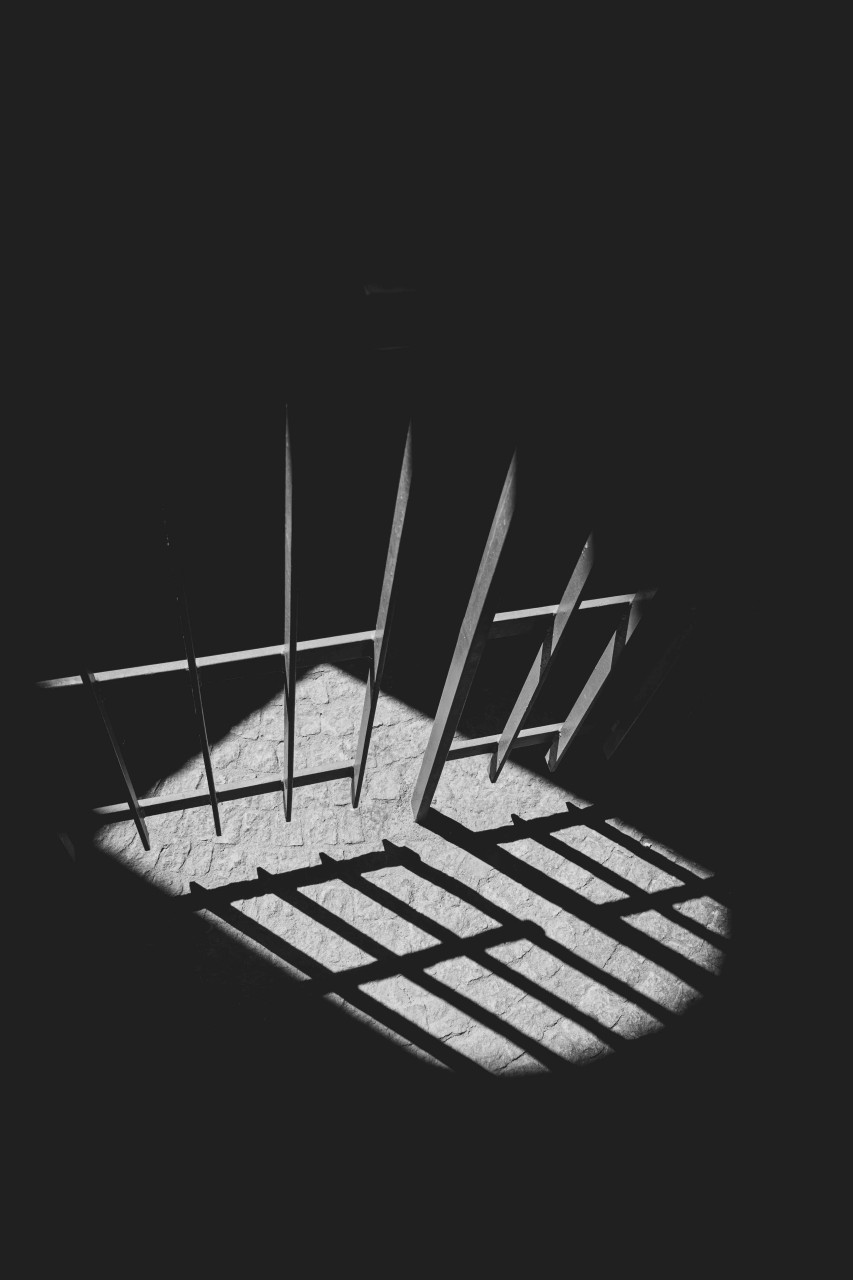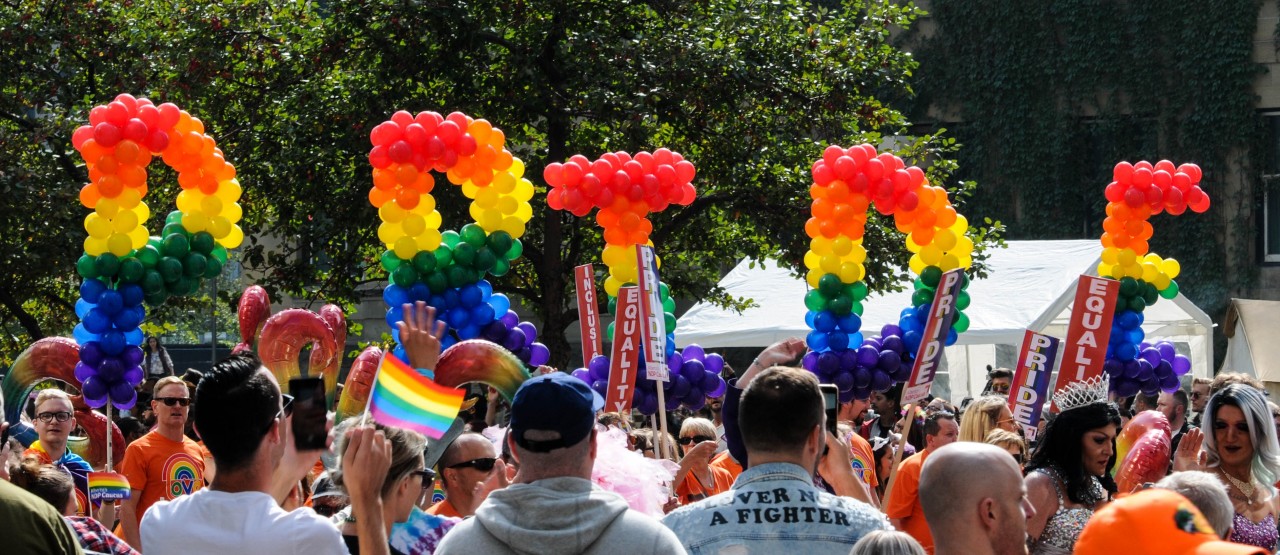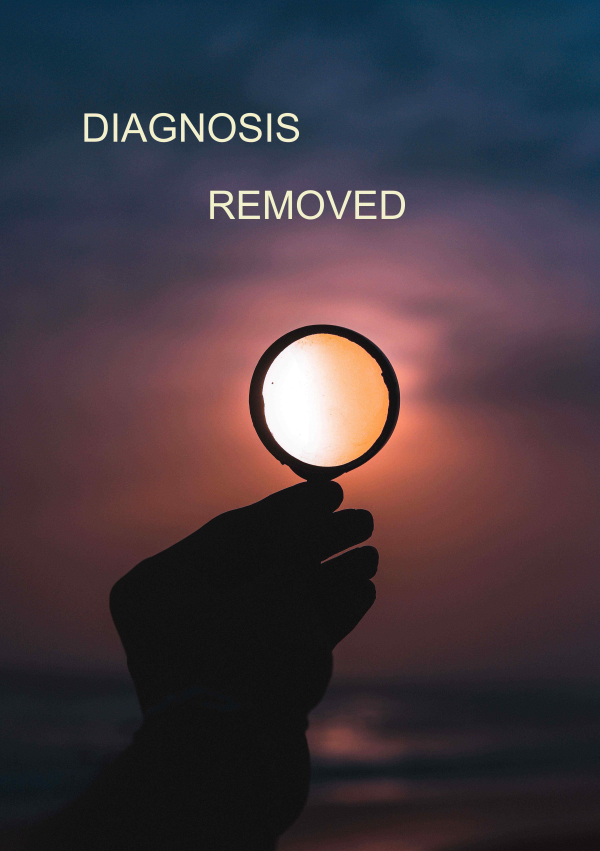Mental Health a "look back" on sexuality and diagnosis
A word of warning – my blog contains sexual references and detailed clinical descriptions of abusive practice, that may offend or upset you.
It is based on published academic literature. Key extracts have been taken from the book Curing Queers by Tommy Dickinson.
It also outlines the rise of modern gay rights social movement and the action taken to remove homosexuality as a mental illness.
From 1780 to 1900, more and more men were being prosecuted for homosexual offences. In 1885, the infamous Labouchere Amendment was passed, which brought all practices of homosexuality between men a crime, whether conducted in private or in public.
Rainbow flag Photo by Tristan Billet on Unsplash
With the LGBT+ Pride Month beginning in June, Symbols such as the rainbow flag and the pink triangle will be seen in social media.
The period between 1937 and 1939 saw the peak of the Nazi persecution of homosexual men Between 5,000 and 15,000 were interned in concentration camps. These prisoners were marked with a pink triangle to signify their homosexuality. According to many survivor accounts, they were among the most abused in the camps. Carl Peter Værnet was a Danish doctor at Buchenwald concentration camp. He experimented extensively with hormones and possible ways to try to treat homosexuality by injecting synthetic hormones.
The brightly coloured symbol is now often worn proudly, was born from a dark period in LGBT+ history and world history.
In 1948 of Alfred Kinsey published "Sexual Behaviour in the Human Male. The report stated that homosexuality is a type of sexual behaviour that may involve as much as half the male population. Kinsey had criticised the clinician's ' tendency to represent homosexuals and heterosexuals as "inherently different types of individuals." (binary) He introduced a 0 to 6 scale to classify sexual behaviour or fantasy from "exclusively heterosexual" to "exclusively homosexual". (non-binary)
Until then it was the generally accepted public notion that homosexual men were a tiny minority. The idea that "they were everywhere" particularly alarmed the general public. In 1949, the British opinion organisation, Mass Observation, conducted the first large-scale sex survey in Britain. It found that 60 per cent of the public sampled were hostile to homosexuality "it was `absolutely detestable", said one respondent; "I shouldn't think they're human", said another.
In 1954 the Parliamentary Wolfenden Committee recommended that homosexual sex in private between consenting adults over 21 should be decriminalised. The report suggested that oestrogen treatment should be made available to all prisoners who wanted to access it. Psychiatrists were also keen to promote Wolfenden's recommendations regarding medically treating homosexuals, during the 1950s and 1960s.
The outcomes of treatment for sexual deviations by various psychoanalytical techniques were poor. At the same time, there was an increasing interest in behaviour therapy approaches. Peter Tachell's website "speaking out for human rights" explains the rationale. Based on Pavlov's experiments giving electric shocks to dogs to change their behaviour, the rationale was to create a mental association between homosexuality and pain or sickness – to make same-sex attraction repellent – and thereby turn gay men heterosexual. The posthumous royal pardon granted to war-time code breaker and computer pioneer Alan Turing was a long overdue attempt to put right a grave injustice. Turing had been convicted of homosexuality in 1952, under the same nineteenth century 'gross indecency' law that sent Oscar Wilde to prison in 1895. Given the option of jail or chemical castration, he chose the latter. The hormonal treatment – similar to the 'cure' devised by the Nazi doctor, SS Carl Vaernet – caused Turing horrendous physical and mental distress; including impotency, breast development and depression. Turing took his own life two years later, at the age of 41.
Photo by Žygimantas Dukauskas on Unsplash
Aversion therapy was the way forward. In the treatment of "sexual deviants" Two powerful conditioned clinical stimuli were used: chemical and electrical.
- Electrical aversive techniques consisted of giving electric shocks via electrodes fixed to the patient's wrists, calves or feet. Patients would be asked to fantasise as well as watch pictures of men in various states of dress.
- Chemical aversion techniques used an emetic such as apomorphine, which produces nausea and vomiting in the patient. When the medication had become effective, the patients were usually shown pictures of undressed men
The first official report of aversion therapy being used to treat a homosexual was published in 1935 by Louis Max. He required a homosexual patient to fantasise about an attractive sexual memory or fantasy together with a `strong' electric shock. He found it was necessary to use an electric shock higher than that would be usually on human beings to successfully reduce positive homosexual desires.
Freund in 1960 administered an emetic mixture (triggering vomiting). When the nausea was overpowering, slides of dressed and undressed men were shown to the patient, There could be as many as 24 sessions. Then the patient was shown films of nude or semi-nude women seven hours after the administration of testosterone (responsible for the development of male attributes).
Participants in such aversion therapy experiences recalled their experience of receiving this treatment. I felt totally depersonalised. I had to give over my own clothes and was told to wear a hospital gown. I can still taste the vile taste of stale sick in my mouth. All I wanted was to wash my mouth out with fresh water, but I wasn't even allowed that.
I remember trying to sneak out of my `prison cell' one night to get some water, but the nurses caught me and literally threw me back in. I was not allowed out for three days. I went to the toilet in the bed; I had no basin, no toilet facilities - nothing. I had to lie in my own faeces, urine and vomit.
Aversion therapy to treat homosexuality was not supported as a treatment option by the medical professional as a whole. However, such treatment was practiced in the 1960's including being kept awake by means of amphetamines and being deprived of sleep for long periods. Many felt "temporarily cured", but some experienced serious deterioration of their Mental Health..
In 1963 John Thorpe and his colleagues reported aversion therapy with the use of an electric shock. The treatment was carried out in a room with a floor area of nine square feet, with the floor completely covered by an electric grid. `Strong' and `painful' electric shocks were delivered through the electric grid to the patient's bare feet. The patient was requested to bring one of his own photos of a nude male; this was fixed to the wall, and illumined by a bright light operated by a psychologist. The electric shocks were administered in response to increases in sexual arousal. Within each treatment session, the picture was illuminated forty times. On nine of these occasions, the patient was randomly shocked.
Photo by Tim Hüfner on Unsplash
The people who received electrical aversion therapy found it extremely unpleasant and dehumanising: In many respects the electric shocks were very, very painful. It was such a sharp bolt of pain shooting through my body. I remember sitting in the room on a wooden chair. I had to be barefoot as my feet had to touch the metal electric grid. My penis was also wired up - I felt totally violated.I remember the excruciating pain of the initial shock; nothing could have prepared me for it. Tears began running down my face and the nurse said: `What are you crying for ? We have only just started.
Many men sought treatment because of the emotional conflict they found themselves in when they became aware that they were sexually attracted to other men.
British society was undergoing a rapid, if uneven transformation, by the mid-1960s. The Sexual Offences Act became law on 27 July 1967, decriminalising sex between two consenting male adults over the age of 21 in private. The recorded incidence of indecency between men in public doubled between 1967 and 1977, which maybe why the aversion treatments continued despite the new legal climate.
Classification of gay, lesbian, and bisexual sexual orientations underwent changes in different editions of Diagnostic and Statistical Manual of Mental Disorders (DSM) published by the American Psychiatric Association (APA). The DSM 2 considered homosexuality as one form of paraphilia, Paraphilias are clinical defined abnormal "sexual behaviours or impulses characterised by intense sexual fantasies and urges that keep coming back".
A pioneer in the eventual removal of homosexuality from psychiatric diagnostic manuals was Evelyn Hooker. She presented an important challenge to the sickness model in her 1957 article reporting that there was no difference in the psychological adjustment of groups of homosexual and heterosexual men. Both lead normal lives and function well at work, with relationships and home life.
In the early 1970s, gay activists began using this work to challenge the `sickness' Mental Health diagnosis. The modern gay rights movement received a boost in a bar in Greenwich village New York USA called the Stonewall Inn. Despite regular police harassment, it became a relatively safe place to drink, dance and meet other gay people. On the 28th June 1969, unlike the usual police busts, the raid occurred during a very busy period. The police used demeaning and humiliating tactics. Word filtered out into the street, and hundreds of protesters gathered outside. Five nights of gathering and picketing. Each night the police had to use force to dispel the protestors, sometimes numbering in their 1,000s. As a result, the Gay Liberation Front (GLF) was formed.
Photo by Toni Reed on Unsplash
The Stonewall riots in New York in July 1969 invoked a fresh gay liberation movement in both the USA and the UK. During this time, gay activists began appearing on American television talk shows to publicly criticise the psychiatric establishment's beliefs on homosexuality. Coming out was risky and could be dangerous but collective direct action was an important driver for change.
In 1970, the American GLF interrupted the American Psychiatric Association (APA) annual convention. A prominent psychiatrist remarked: `I never said homosexuals were sick - what I said was that they had displaced sexual adjustment. The GLF were not satisfied with shouting from the gallery, they called for an official voice at the conference:
In an article entitled `Aversion Therapy is Like a Visit to The Dentist' in Gay News in 1972, Dr Marks, consultant psychiatrist at the Maudsley Hospital, tried to reassure his audience that the pain and discomfort experienced by the patient receiving aversion therapy was greatly exaggerated and, in fact `it is just like a visit to the dentist ... It is no different from any other form of therapy. Peter Tatchell recalls attending a lecture from the world's then leading psychologist, Prof Hans Eysenck, publicly defend the use of aversion therapy, hosted by St Thomas's hospital in London. When I challenged him, I was violently ejected from the audience. A 2009 survey of lesbian, gay and bisexual people found that 28-40% suffered from depression, 20-25% had self-harmed and 20-40% had attempted to kill themselves (compared to 2-6% of the general population).
Photo by Ahmed Zayan on Unsplash
In 1973, the APA committee responsible for editing the American Diagnostic and Statistical Manual for Mental Health (DSM), held a meeting. The debate that followed inspired Robert Spitzer, to join the fight against the sickness diagnosis. He found that people who suffered from most disorders listed in the DSM usually experienced serious distress or their conditions interfered with their overall functioning. He argued that for behaviour to be listed as a psychiatric disorder, it had to be accompanied by distress and/or some impairment in their social functioning and concluded that since life functioning was not necessarily impaired, homosexuals could not be diagnosed as having a Mental Health disorder.
On 15 December 1973, the APA board of trustees voted unanimously to remove homosexuality from the DSM, and the following year, the seventh printing of the DSM version 2 excluded homosexuality as a diagnosable illness.
The media were keen to report this decision and ran front-page headlines such as The New York Times' `Psychiatrists in a Shift. Declare Homosexuality no Mental Illness."' Meanwhile, in mock relief, the Gay Community News announced: `It's Official Now: We're Not Sick.
In modern times, homosexuality has been normalised in many countries, with same-sex marriage a common occurrence. The Hayes code (code regulating the moral content of feature films) first published in 1930 and remained in force until the Supreme Court decision declared it unconstitutional.in 1952. Today, there are much more LGBT+ representation within films, with big companies like Disney now showing once 'deviant' behaviour to millions of people.
While it hasn't all been smooth sailing, with homophobia and higher suicide rates among the LGBT+ community. The internet has widened the accessibility for many LGBT+ individuals stuck in hostile places to find more easily their own place community. This has allowed many different groups to have shared experience and feel part of the community with many support groups to help isolated individuals.
Today, there is a greater awareness of LGBT+ culture in our society and our workplace, normalising many aspects, with trans females/males, gay, lesbians, bisexuals, asexuals, to find their place within society and workplace with little fear of repercussion.
Comments
By accepting you will be accessing a service provided by a third-party external to https://www.flashinglightbulb.co.uk/



